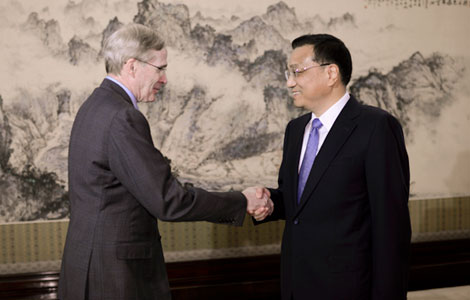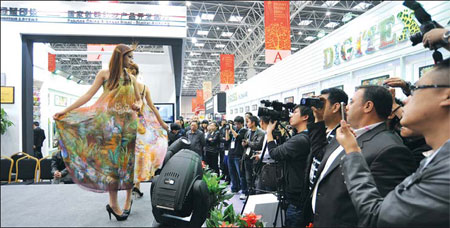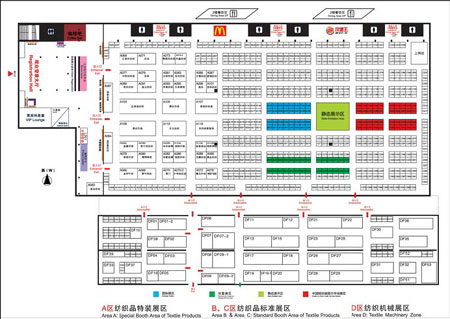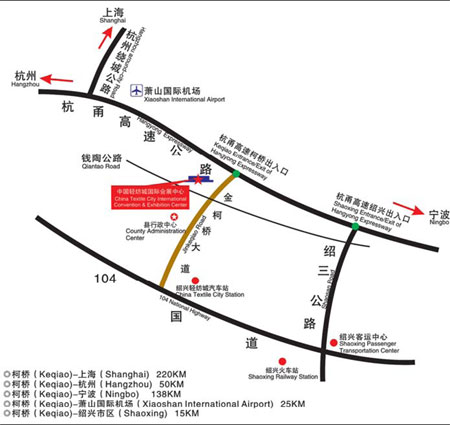China Textile City defies economic slowdown with record sales in 2012
Updated: 2012-10-22 07:48
By Tang Zhihao in Shanghai (China Daily)
|
|||||||||||
|
One of the largest textile industry events in China, the expo attracts participants from around the globe, helping local companies find international business opportunities. |
|
Though only a township, Keqiao looks like a bustling city. |
Despite the current global economic slowdown, the sales revenue of Keqiao's China Textile City hit a record high of more than 40 billion yuan ($6.4 billion) in the first half of this year.
The industry as a whole in China is facing multiple challenges from declining global demand and the increasing cost of labor and raw materials.
Figures from the China National Textile and Apparel Council show that in the first eight months of 2012, a total of $137.4 billion worth of textiles and garments were exported, a decline of 0.1 percent over a the same period last year. Export volumes decreased for three consecutive months from June to August.
In this context, the authorities of Keqiao, a township of Shaoxing county, Zhejiang province, have been making every effort to boost the local textile industry.
Hosting the Keqiao international textile expo is a central part of this strategy. Companies said the twice-a-year event provides the chance for them to listen to clients and then adjust strategies.
"By participating in the Keqiao expo we can compare our products with others to evaluate how we performed in the past year," said Pan Yongxing, CEO of Golden Time Knitting Group. "It also offers a good chance for us to listen to our clients."
Pan's company began participating in the Keqiao expo in 1999.
"We hope during the coming autumn expo, people can better understand our innovation capability and be informed about our products," said Wu Rongguo, CEO of Huiweishi Textile Co Ltd.
At the same time, the authorities have opened new markets to provide more business opportunities.
In addition to government efforts, local companies have developed a range of approaches to maintain growth in the face of declining demand.
Some companies are going into new business sectors, while others have improved product quality to retain existing customers.
Some say they plan to expand the client base by making value-added products.
"Clients will approach us if we can provide quality and up-to-date products," said Wu of Huiweishi Textile. Its main products are suede and plush, a soft fabric often used for stuffed animals and upholstery.
Pan of Golden Time said his company "will pay great attention to developing new products according to market demand".
Pan said the company will invest 2 percent of its revenues in innovation every year. With annual sales totaling about 300 million yuan, spending on innovation would hit 6 million yuan every year.
"By investing in innovation, companies are capable to provide clients with high-value-added products," said Pan.
To better meet client demand, some companies are cooperating with foreign designers to provide more fashionable products.
"We have more than 30 foreign designers in the company - they capture changes in the international market and design patterns based on client needs," said Wang Fengyi, general manager of Zhejiang R.G.B Textile Printing and Dyeing Co Ltd.
"As a textile printing and dyeing company, we need to be ahead of fashion rather than follow the trend," said Wang.
Online trade
The development of an online trading system has also provided opportunities for local companies seeking global expansion.
In March 2011, the Shaoxing county government held a press conference at the Great Hall of the People in Beijing to announce the launch of the "Online Textile City" at www.qfc.cn. The county government has signed agreements with Microsoft and the Bank of Communications for technological and financial support.
"Many foreign companies need fabrics but they cannot efficiently access to supplier information, so the online system is the best way to solve the problem," said Ding Jianjun, general manager and one of the founders of the Online Textile City.
Ding said the online system has some unique features not available in traditional trading models. Companies can do business without time and geographical limitations, which could help companies develop connections with more clients.
He said the online system guarantees buyers can find information on products in less than 10 minutes.
He said total online trading volume was around 1 billion yuan by the start of October.
Local authorities are confident that sales revenue through the system will continue to have stable growth in the years to come.
Textile hub
After decades of development, the county of Shaoxing is now one of the most important textile trading hubs in China.
To support that development, the local government invested heavily on building a large trading facility known as China Textile City.
In Keqiao township, the massive facility founded in the 1980s is now one of the largest fabric trading centers in China, now covering more than 3.2 million square meters of floor space and home to 22,000 operations including stores, stalls and offices.
It has zones for traditional trading, R&D, international trading, materials and logistics.
tangzhihao@chinadaily.com.cn
|
Map of the exhibition area. |
|
China Textile City, where the expo will take place, has a favorable location. It is 15 kilometers from downtown Shaoxing and 25 km from neighboring Hangzhou's Xiaoshan International Airport. Its advanced expressway network gives it easy access to other nearby metropolises, such as Shanghai and Ningbo. |
(China Daily 10/22/2012 page6)
Hot Topics
CPC National Congress,Mo Yan, Bogu Kailai, Diaoyu Islands, iPhone, Yao Ming, Sun Yang, Li Na, Liu Xiang, shenzhou, taiwan, hiv, school bus, house, hk, rare earth, food safety
Editor's Picks

|

|

|

|

|

|











